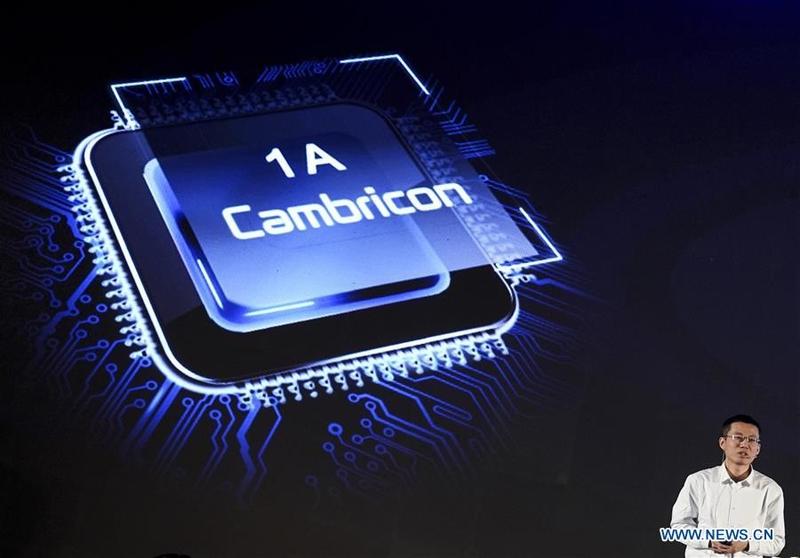 In this file photo, Chen Tianshi, researcher of the Chinese Academy of Sciences Institute of Computing Technology and Cambricon CEO, introduces an artificial intelligence chip during a press conference. (PHOTO / XINHUA)
In this file photo, Chen Tianshi, researcher of the Chinese Academy of Sciences Institute of Computing Technology and Cambricon CEO, introduces an artificial intelligence chip during a press conference. (PHOTO / XINHUA)
Chinese chipmakers have surged in the past year, boosted by Beijing’s support for self-sufficiency in semiconductors and as adoption of 5G and artificial intelligence prove resilient amid the pandemic. There’s no sign that rally is about to slow even as their stocks looks increasingly expensive.
Cambricon Technologies Corp Ltd, a developer of AI chips, surged as much as 358 percent to 295 yuan on its first day of trading today on the Shanghai Stock Exchange’s STAR board, before closing up 230 percent. It follows top chipmaker Semiconductor Manufacturing International Corp, which jumped 202 percent on its Shanghai debut last Thursday. Other chip stocks that have also rallied include Advanced Micro-Fabrication Equipment Inc, which has posted gains of about 127 percent since the start of this year, while Will Semiconductor Ltd and Gigadevice Semiconductor (Beijing) Inc are the fourth- and sixth-best performers on the CSI 300 Index in the past twelve months.
These kind of high valuations will become a new normal during a three to five year period when the industry is still developing and remains backed by supportive government policies and access to capital financing.
Kevin Wang, Vice-president and semiconductor analyst at Mizuho Securities Asia Ltd
ALSO READ: Top China chipmaker more than triples in Shanghai debut
That’s left chipmakers trading at lofty valuations. SMIC’s first-day surge meant its Shanghai stock is valued at 283 times forward earnings, more than three times that of its Hong Kong-traded securities. Advanced Micro-Fab is trading at about 380 times forward earnings, compared with 13.8 for the Shanghai Composite Index. Still, local investors are looking past the high valuations and any concerns over rising US-China tensions and are instead banking on Beijing’s support for the semiconductor industry as it seeks to reduce reliance on American technology.
“These kind of high valuations will become a new normal during a three to five year period when the industry is still developing and remains backed by supportive government policies and access to capital financing,” said Kevin Wang, vice-president and semiconductor analyst at Mizuho Securities Asia Ltd. “If they can maintain their current growth rate then definitely the PE and share prices will continue to rise. This is likely to occur as China accelerates its localization.”
To accomplish this goal, the government last year created a US$28.9 billion semiconductor investment fund and has also provided subsidies and introduced supportive policies for the industry. Adding to that is a post-pandemic explosion of government and private sector investment in 5G wireless networks, cameras and sensors and AI software, spurring continued bullishness among domestic investors.
READ MORE: China stock euphoria lifts IPO to record 924% first-day gain
Some investors may be turning more cautious. SMIC’s shares slumped 25 percent in Hong Kong on the day its Shanghai stock debuted and are down about 33 percent from the record reached July 13. The H-shares are trading at about HK$28.20, or the equivalent of about 25.42 yuan, about a third of its shares on the Chinese mainland.
The discrepancy between the valuations of semiconductor companies in Shanghai and Hong Kong is driven by onshore Chinese investors that believe domestic localization will drive future investment into the industry, according to Nicholas Yu, a portfolio manager at Ovata Capital Management Ltd.
“For unique technology in China, people are very willing to pay a premium for it because whatever earnings they have right now aren’t indicative of future earnings power,” he said.


